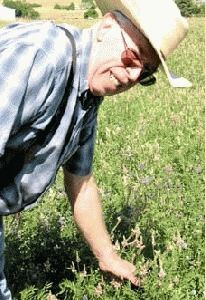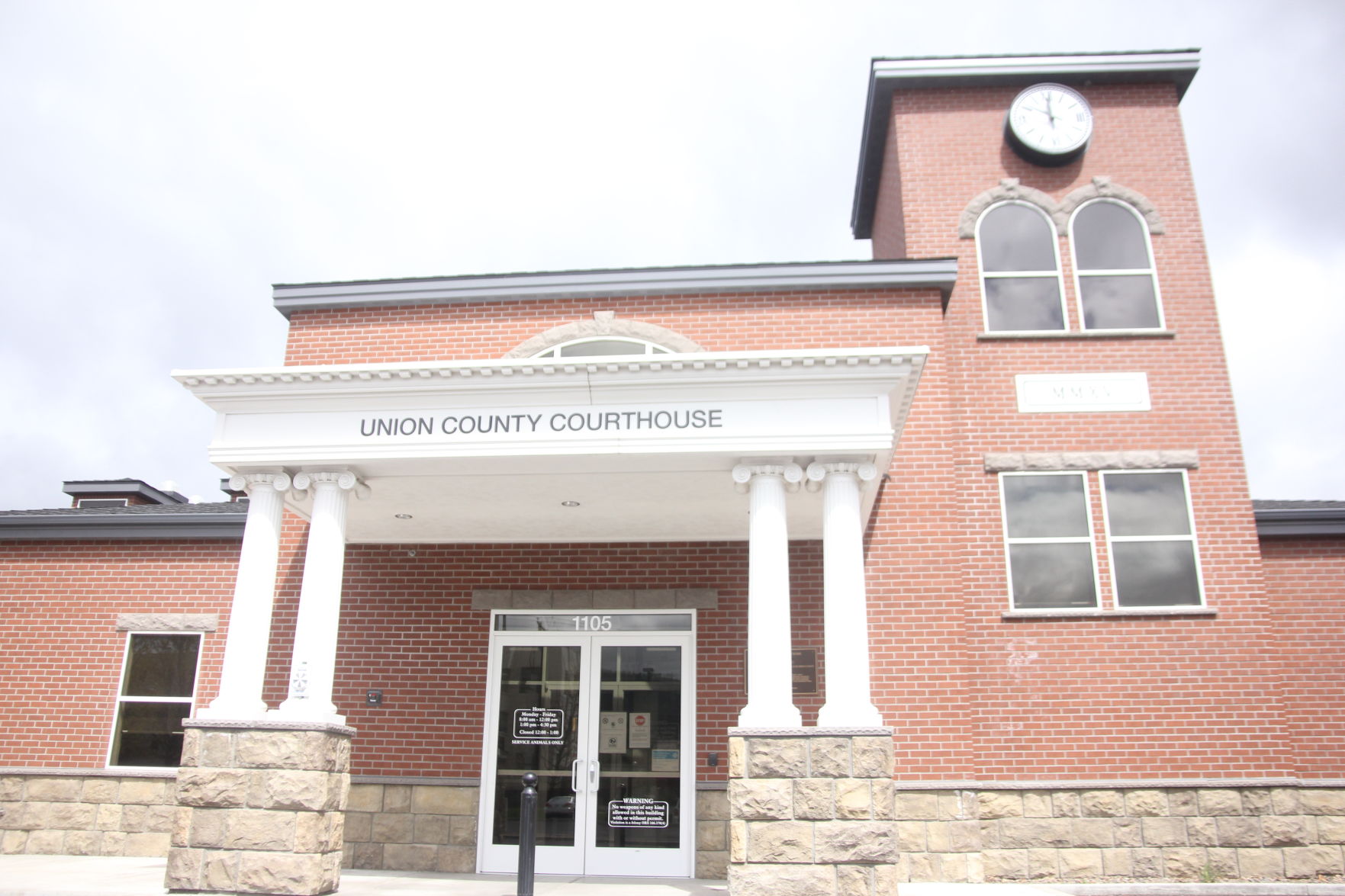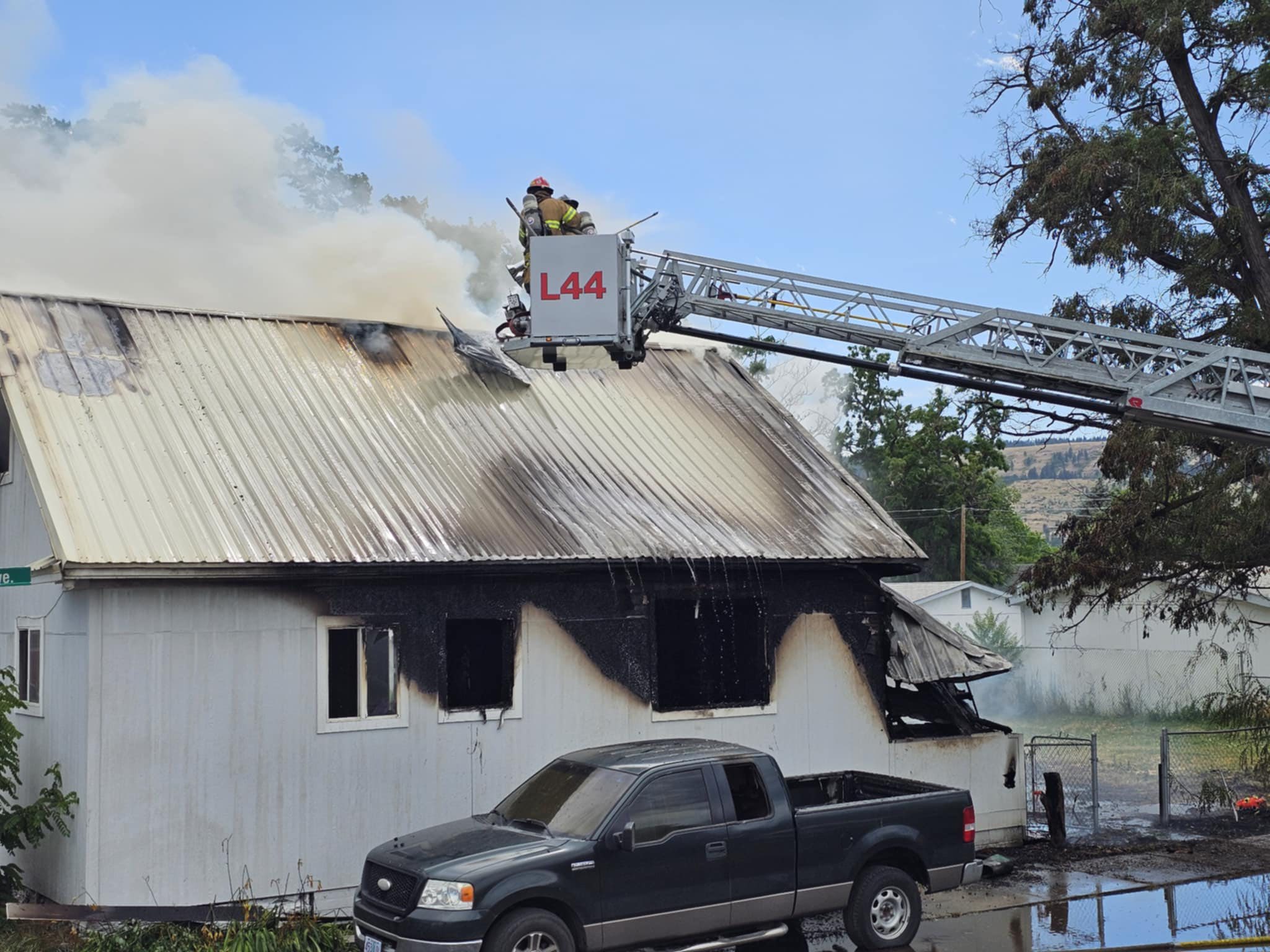HOLY CLOVER
Published 12:00 am Monday, August 28, 2006

- GENTLEMAN Bob Jellum shows off his field of sainfoin, French for holy hay, also known as holy clover. ().
Story and Photos by
MARDI FORD
Bob Jellum may not raise the only registered white Galloways in the valley. But he was the first.
And though there are lots of evergreen trees around here, Bob and his wife Linnie are the only folks living on Evergreen Road who still have them alive and thriving.
Bob likes experimenting with firsts and onlys. He admits to having a penchant for the unusual and unique.
For those who know him well, it really is no surprise that on four and a half acres behind his house blooms another Union County first and only holy clover.
Bob calls the forage crop by its more commonly known name sainfoin. His pronunciation sounds like fan coin. Sainfoin is a French word that literally translates as holy (sain) hay (foin). Sainfoin (Onobrychis viciaefolia) is also called esparcet and holy clover.
Holy clover is so old, it is reputed to have gotten its name through its association with the Nativity. Apparently, when the baby Jesus lay down his sweet head, it was holy clover in that manger that nestled him to sleep.
Indigenous to southern Europe and the more temperate regions of western Asia, in more recent centuries sainfoin has been widely cultivated in Europe as a forage crop.
Though several strains have been introduced to North America since 1900, sainfoin has never really caught on in the U.S. Though reputed to thrive on soil too dry and barren for alfalfa and other forms of clover, sainfoin has never been popular in the alfalfa loving West.
But that may be changing. Although Bob has been growing sainfoin for six years and researching it longer, he has seen a "big push" this past year for the holy clover.
Bob first heard about sainfoin from local chiropractor Dan Kehr.
"He grows it on his ranch near Monument," Bob says.
Six years ago, before he planted the first Union County field in holy clover, Bob did a lot of research first. He says much has been published from research from state universities in Montana and Colorado.
"One thing I found out is that cattle don’t bloat on sainfoin. I like the idea that if my cows got in here, I wouldn’t have to worry about bloating. That’s the big thing to me," Bob says.
Since sainfoin is a dryland crop, he saw little results published for growing it under irrigation. So, as an experiment, the energetic 70-year-old decided to irrigate his field of holy clover, moving handlines several times a day.
"That might not work everywhere in this valley, but there’s good drainage here," he says.
Next to the sainfoin is alfalfa also irrigated. The two crops blend a bit in the center with a showy mix of lavender and pink blossoms.
Bob has treated his both crops exactly the same. His experience is that the sainfoin out yields the alfalfa on both cuttings on the sainfoin’s second cutting yield was 1.8 ton per acre.
"I’m the first to admit I’m a gentlemen farmer. If I had to do this for a living, I’d starve. But, I like to experiment with new things. If somebody else could benefit from this, that’d be great," he says.
Sainfoin classifies as a leguminous (seed pod bearing ) perennial herb. Each holy clover seed comes safely nestled in its own little curved pod. Bob says the seed looks like a small pea. Because of the pod, planting holy clover requires about 30 pounds of seed per acre, whereas alfalfa takes about 15 pounds.
"You’ve got both the pod and the seed, you see," he explains the difference.
Bob had been told that, unlike alfalfa, inoculating sainfoin seed before planting wasn’t necessary. But after doing more research, he read an article that suggested it was better to use inoculated seed.
Inoculation is the process of treating the seed with a specific bacteria to help the plant convert nitrogen into a form it can readily use. Nitrogen is what helps plants have that healthy, green color.
Using pre-inoculated seed or inoculating the seed before planting is also cheaper than applying nitrogen to the field.
Bob decided he wanted pre-inoculated seeds, so he did some more research and found some for sale.
By the rich, healthy look of his field, it seems he made the right choice.
Bob says his cattle love it and so do his mules.
Although Sainfoin has not caught on here in the U.S., it is an important forage crop and honey source throughout Europe.
"France is famous for its honey. Bees love this stuff. Just look at ’em out there." Bob moves a few more feet into knee-high, green lushness graced by rosy pink blossoms. "Listen. Hear that?"
Even the dogs pause. For a few moments, the low, thriving hum of industry-at-work permeates the morning. Stacked at the far edge of the field are the tell-tale white boxes of commercial hives. The hives, and the bees, belong to apiast Ramon Westenskow of
La Grande.
Suddenly young Jack, an energetic half-lab, half German shorthair mix, snaps at one darting honey bee breaking the spell. Wait a minute. These are bees.
"They won’t hurt you," Bob says quickly. "Honey bees aren’t interested in us. Look."
Sure enough beneath a canopy of holy clover blossoms, scores of honey bees zoom here and there, seemingly unaware of the intrusion.









